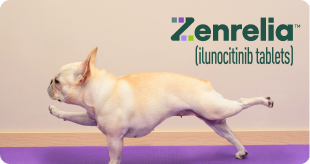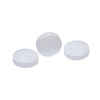Glipizide


Prescription required.
Learn more
Don’t have a veterinarian? Book an appointment with Vetster
 Temporarily Out of Stock
Temporarily Out of Stock
 Thank you, we will notify you when this product is available.
Thank you, we will notify you when this product is available.
Prescription required.
Learn more
Don’t have a veterinarian? Book with Vetster


What is Glipizide?
Glipizide is used to treat type II diabetes in cats along with diet, exercise, and insulin therapy if necessary. Glipizide requires a prescription from your veterinarian.
For:
Cats
Benefits:
- Normalizes blood sugar levels in cats with type II diabetes
- Highly effective when combined with low-carbohydrate diet
- Easy administration via oral tablets
How it Works:
Glipizide is an oral blood-glucose-lowering drug in a class called sulfonylureas. It acts by causing the pancreas to release insulin, which helps to lower blood sugar.
Cautions:
Tell your veterinarian if your pet has kidney or liver disease, thyroid disease, a serious infection, illness or injury, or if your pet needs surgery. Also tell your veterinarian if your pet is pregnant or lactating. Side effects include vomiting, loss of appetite, and jaundice. Hypoglycemia may occur.
Brand Name:
Glucotrol (Pfizer)
Generic Name:
Glipizide
What is Glipizide:
Glipizide is in a class of drugs called sulfonylureas and it is used to help control blood sugar levels. Glipizide is used in cats along with diet and insulin therapy. Glipizide may also be used for purposes other than those listed in this guide.
What should I discuss with my veterinarian before giving glipizide to my pet:
Tell your veterinarian if your pet has kidney or liver disease, thyroid disease, a serious infection, illness or injury, or if the pet needs surgery. Tell your veterinarian if your pet is pregnant or lactating.
What is the most important information I should know about glipizide:
Glipizide is a prescription medication not FDA approved for veterinary use; however, it is a commonly accepted practice for veterinarians to use this medication in cats. Glipizide is available as 5mg tablets. The usual initial dose for cats is 2.5mg by mouth twice a day. Treatment with glipizide in humans may increase the risk of death from cardiovascular disease compared to treatment of diabetes with diet alone or diet with insulin. Signs and symptoms of low blood sugar (hypoglycemia) may include headache, drowsiness, weakness, dizziness, fast heartbeat, sweating, tremor and nausea. Treat hypoglycemia in cats by applying 1/4 teaspoon of Karo Syrup to the cat's gums. Do not give more of this medication than is prescribed without consulting your veterinarian. Do not use this medication in dogs.
How should this medication be given:
Give this medication exactly as directed by your veterinarian. Allow pet to drink plenty of water. Glipizide should be taken before meals. Follow your veterinarian's instructions. If you do not understand the directions ask the pharmacist or veterinarian to explain them to you. Store glipizide at room temperature away from moisture and heat. Keep this medication away from children and pets.
What happens if I miss giving a dose:
Give the missed dose as soon as you remember. However, if is almost time for the next regularly scheduled dose, skip the missed dose and take the next one as directed. Do not give a double dose of the medication.
What should I avoid while giving Glipizide to my pet:
Follow diet and medication routines closely. Changing any of these things can affect blood sugar levels. Tell your veterinarian that your pet is taking glipizide before undergoing any surgery. Do not take any prescription, over the counter, or herbal cough, cold, allergy, pain, or weight loss medications without first talking to your veterinarian.
What are the possible side effects of Glipizide:
If any of the following serious side effects occur, stop giving glipizide and seek emergency veterinary medical attention; an allergic reaction (difficulty breathing; swelling of the lips; tongue or face; hives). Other less serious side effects may occur due mostly to blood sugar levels that are too low or too high. Symptoms of hypoglycemia or low blood sugar include shaking; headache; pale, cool skin; and anxiety. Symptoms of hyperglycemia or high blood sugar include increased thirst, hunger and urination. Other side effects may also occur. Talk to your veterinarian about any side effect that seems unusual or bothersome to the animal.
What other drugs will affect Glipizide:
Glipizide levels may increase or decrease when given with many other medicines. Before giving glipizide tell your veterinarian if your pet is also taking aspirin or any other salicylate, an NSAID such as carprofen, a sulfa drug such as SMZ/TMP, a monoamine oxidase inhibitor (MAOI) such as selegiline, a beta blocker such as atenolol, a steroid such as prednisone, a phenothiazine such as acepromazine, phenytoin, or prescription, over the counter, or herbal cough, cold, allergy or weight loss medications. Drugs other than those listed here may also interact with glipizide or affect your pets condition. Talk to your veterinarian or pharmacist before giving any prescription or over the counter medicines.
Where can I get more information:
Your pharmacist has additional information about glipizide written for health professionals that you may read.
Call your veterinarian for medical advice about any side effects to your pet. You may report side effects to the FDA at 1-800-FDA-1088.


Glipizide Directions:
- Glipizide is a prescription medication used to regulate type II diabetes in cats.
- Glipizide is not FDA approved for use in veterinary medicine; however, it is a commonly accepted practice for veterinarians to prescribe this medication for cats.
- Glipizide is for use in cats only. Do not use this medication in dogs.
- Glipizide should be given with food.
Glipizide may cause blood sugar levels to be too low. Signs and symptoms of low blood sugar (hypoglycemia) may include headache, drowsiness, weakness, dizziness, fast heart beat, sweating, tremor and nausea. Treat hypoglycemia in cats by applying teaspoon of Karo Syrup to the cat's gums. Routine blood tests, urinalysis, and kidney function tests may be needed.
Glipizide Dosage:
| Weight | Dosage |
|---|---|
| All weights | 2.5 mg to 5mg per cat by mouth twice a day with food. |
| Dogs |
|---|
| Do not use! |
| Horses |
|---|
| Do not use! |
Storage:
Store this medication at room temperature away from moisture and heat.


Glipizide Ingredients:
| Active Ingredients | Amount |
|---|---|
| Glipizide | 5 mg |


 Swipe
Swipe
 AutoShip
AutoShip
Customers also boughtView All
 Swipe
Swipe
















































 Would recommend
this product
Would recommend
this product










